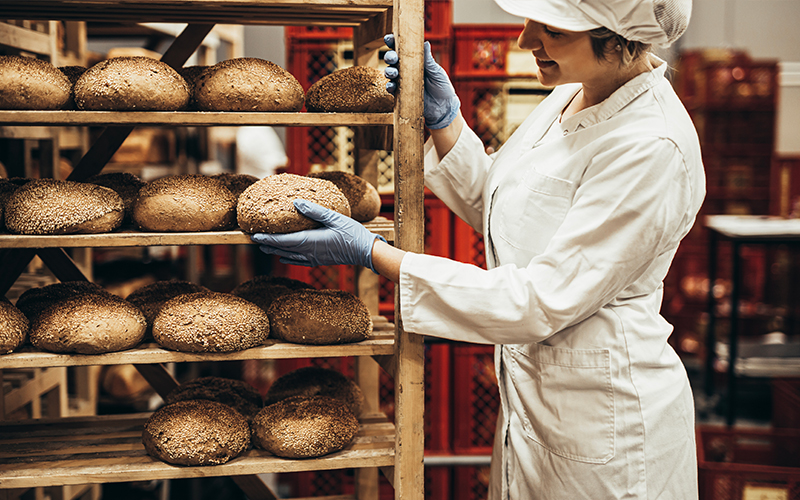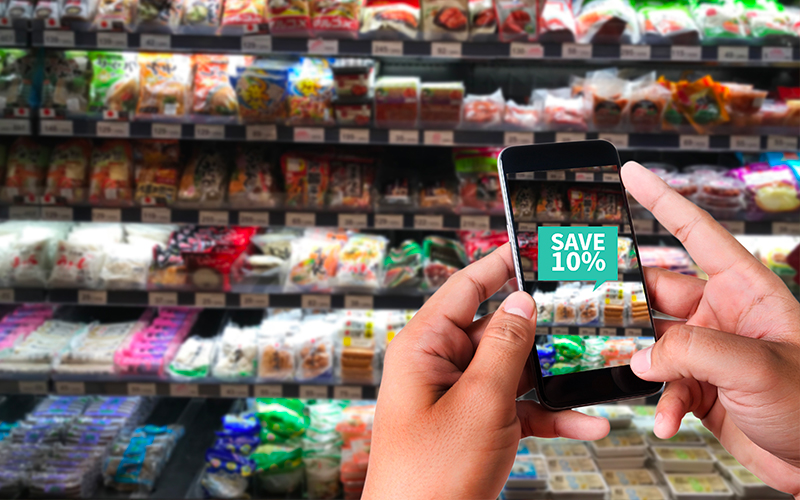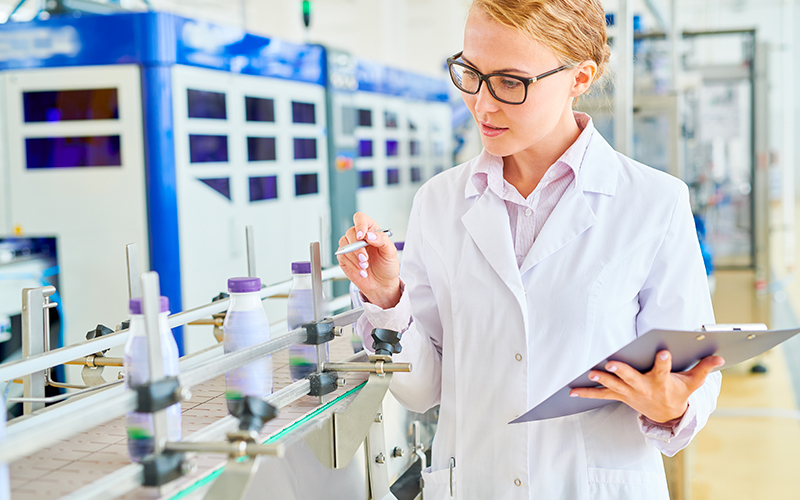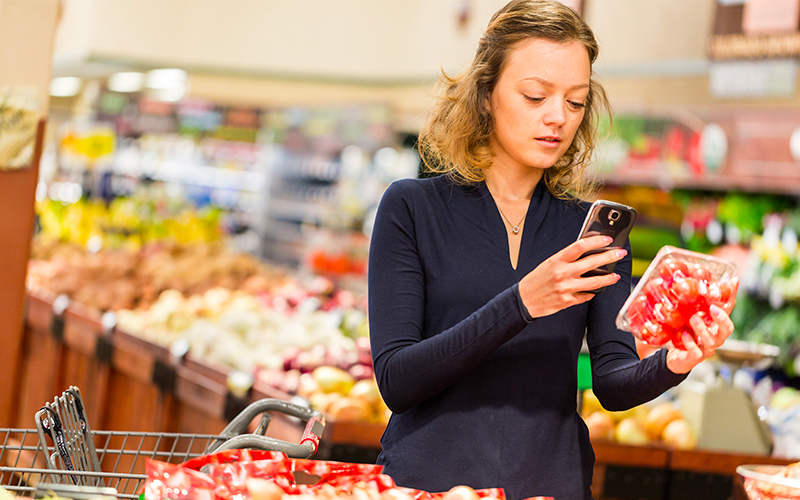The food industry benefits greatly from the latest advancements in the A.I. field, from the enhancement of some aspects of the production process and food analysis, to the improvement of the customer experience. Technology can actually work alongside humans to increase production efficiency in the food area, since it can automate about 90% of the operations.

How can A.I. enhance the production process?
A.I. helps simplify the work in the food industry by making tasks easier for employees and by running every single step more smoothly.
Ordering fresh products and readying them to be turned into canned or boxed food can be very time consuming. An app that helps this kind of selection is TOMRA Sorting Food, which uses optical sensors with machine learning features to offer solutions. This app, through cameras and control devices, shares the same view of the food consumers have and places orders based on their preferences.
Technology is also helping increase the hygiene of the implants and the equipment used in the food industry. An interesting way to meet hygiene standards and cut down time and resource for cleaning is Self-Optimizing-Clean-In-Place (SOCIP), a system that scans food remnants and microbial debris through ultrasonic recording and fluorescence imaging.

How A.I. can improve costumer experience
The biggest change caused by Artificial Intelligence in the food industry is the way consumers interact with restaurants.
This way A.I. can also help improve costumer experience, like what happened in China when KFC collaborated with Chinese search engine Baidu to create a face recognition system able to examine the customer’s face and suggest them the right food combinations based on their age and mood, with a 99.7% accuracy rate. According to it, a person under 30 years could consume a menu made up of a hamburger, chicken wings and Coke, while someone over 50 could only have a porridge with soy milk. Moreover, in collaboration with Ant Financial, a branch of Alibaba, KFC China has introduced a new method of payment, called Smile to Pay. This system is based on face recognition technology as well: a smile is all it takes to authorize the payment and to scan the client and identify them in about two seconds, thanks to a 3D camera paired with an algorithm that can verify the authenticity of the footage.
In the home delivery area, Hotbox has created the professional fan oven of the same name. This oven works on batteries and has an electric sensor that checks the heat and removes humidity. It keeps the food warm and preserves its flavor during the trip, avoiding the risk of dishes turning cold and chewy upon delivery.
Robotics is also at the forefront of innovation. Espartaco Borga’s restaurant La Duni, in Dallas, is employing the robots created by American Robotech to manage its dining room. These robots take the customers’ orders on a touch screen, bring dishes to the tables and even sing “happy birthday” on occasion. Each of them has its own personality and interacts with customers: they play a central role in the experience of this restaurant.

A.I. helps analyze food products
A.I. meets the needs concerning food analysis as well.
Hawkspex, for instance, uses smartphone technology to identify and examine what is being filmed on camera. This app, developed by the Fraunhofer Institute, allows consumers to avoid relying on nutrition labels and turns their mobile devices into a hyperspectral camera. The phone screen in selfie mode lights up the object we want to inspect in different colors and the camera analyzes the intensity of light reflection and, thanks to an algorithm, extracts information about the elements the product is made up of.
Moreover, it’s becoming more and more customary for food companies to turn to A.I. to obtain a better understanding of the dynamics regarding food aroma and taste. Ibm has collaborated with McCormick, an important player in the food flavor field, to explore and create new taste combinations and align more accurately with consumers’ preferences, using algorithms to investigate the data. Foodpairing, a start-up running between Gand and New York, generates digital maps of foods and uses A.I. to recommend food and drink combinations based on both human preferences and back data analysis.
Therefore, the food industry seems to increasingly move towards digitalization, especially to meet needs linked to safety and hygiene, which have become crucial after the pandemic; to give power to customers during their restaurant experience and to make tasks easier for every employee in the food business. In conclusion, technology and A.I. have the potential to make the food industry healthier and thriving for both workers and consumers.







